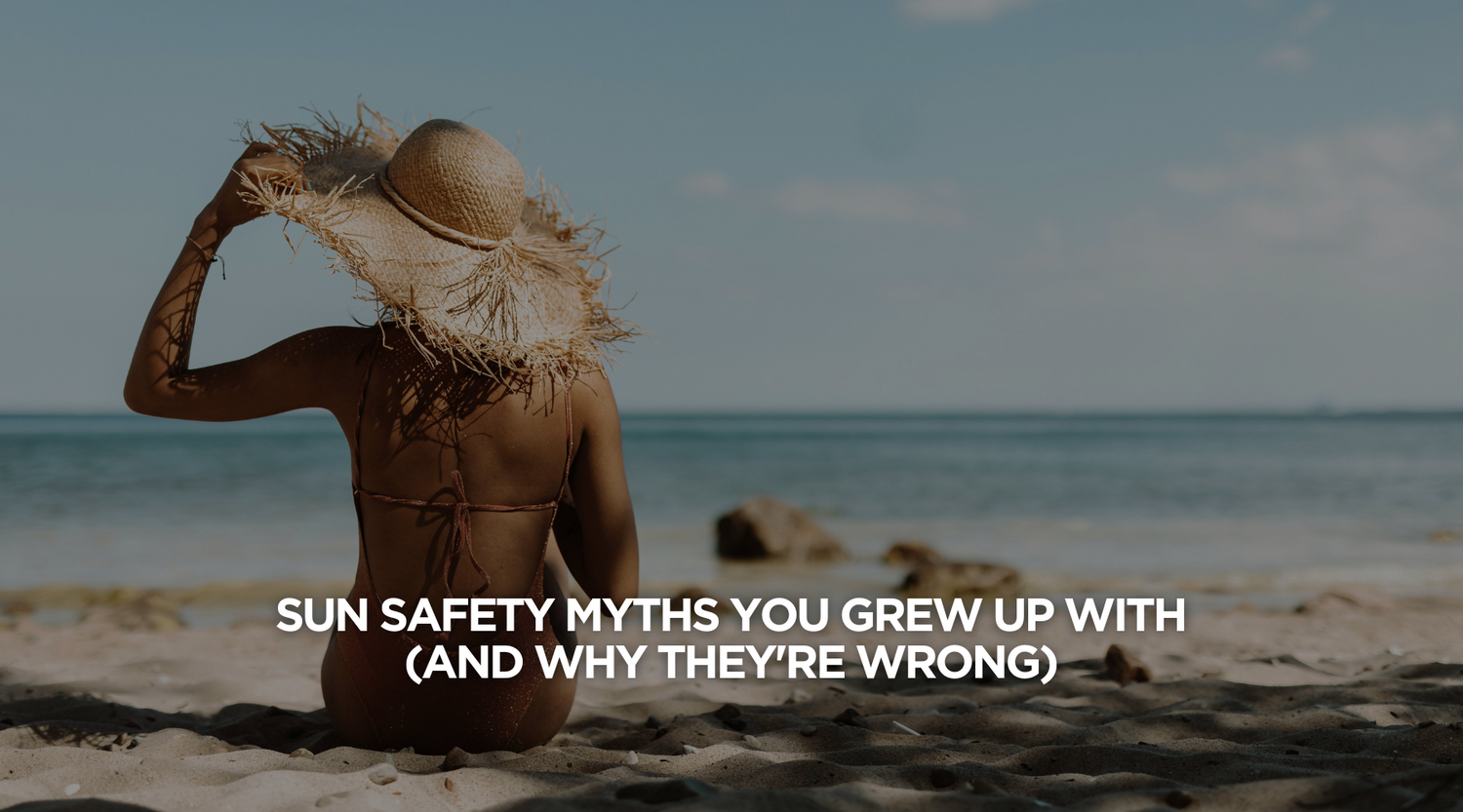We all grew up with well-meaning advice from parents, coaches, or friends about how to stay safe in the sun. But as we’ve learned more about UV exposure and skin health, it turns out some of that old-school sun wisdom didn’t age so well.
Let’s bust a few of the most common sun safety myths that still linger — and explain what science (and dermatologists) now recommend instead.
☀️ Myth 1: “You Need a Base Tan to Avoid Burning”
The truth: There’s no such thing as a “safe tan.” A tan is your skin’s response to DNA damage from UV radiation. Getting a “base tan” before a holiday doesn’t prevent sunburn — it actually increases your risk of long-term sun damage and skin cancer. Even tanned skin offers only a very small amount of natural SPF (around SPF 3–4).
✅ What to do instead: Use broad-spectrum SPF50+ sunscreen, wear UPF50+ protective clothing like sleeves and shoulder wraps, and avoid peak UV hours.
🕶️ Myth 2: “If It’s Cloudy or Cool, You Don’t Need Sunscreen”
The truth: Up to 80% of UV rays can penetrate clouds. And in places like Australia, UV levels can still be extreme even when temperatures are mild. You can absolutely get burnt on an overcast winter day or while skiing in the snow.
✅ What to do instead: Always check the UV Index, not just the weather. If it's 3 or higher, sun protection is essential — no matter the temperature or cloud cover.
🧴 Myth 3: “You Only Need to Apply Sunscreen Once”
The truth: Sunscreen wears off due to sweat, water, towel-drying, and general wear. Most people don’t apply enough in the first place, and forget to reapply every two hours — especially when active.
✅ What to do instead: Reapply every 2 hours, or immediately after swimming or sweating. Don’t forget areas like ears, hands, and the back of your neck.
👕 Myth 4: “A Hat and T-Shirt Is Enough Protection”
The truth: Regular clothing may not block UV rays effectively. A standard cotton T-shirt has a UPF rating of around 5–15 — meaning some UV still passes through. And baseball caps leave your ears and neck exposed.
✅ What to do instead: Look for UPF50+ certified clothing that’s specifically designed to block 98% of UV rays. Pair wide-brim hats with sun sleeves, shoulder wraps, or face shields to get full coverage.
🧴 Myth 5: “Natural Skin Tones Don’t Need Sun Protection”
The truth: While darker skin has more melanin, which offers some UV protection, no skin tone is immune to sun damage or skin cancer. In fact, skin cancer is often detected later in people with darker skin — making it more dangerous.
✅ What to do instead: Everyone — regardless of skin tone — should take sun protection seriously.
The Better Way: Smart Sun Safety for Every Season
Sun protection has come a long way. Modern options like SParms UPF50+ arm sleeves, palmless gloves, and shoulder wraps give you lightweight, breathable, and sweat-friendly protection — no greasy sunscreen required. Combine them with a broad-spectrum SPF50+ sunscreen (like our 100% Organic Sport Sunscreen) and sun-smart habits, and you’re covered.
Final Thought
Sun safety isn’t just for the beach. It’s a daily, year-round habit, especially in Australia where UV levels are high even in winter. Let go of those old myths and give your skin the long-term care it deserves.
